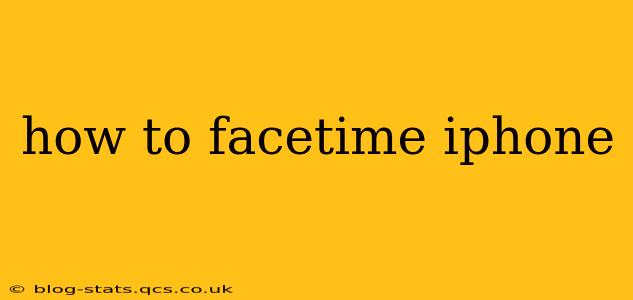FaceTime, Apple's built-in video calling app, makes connecting with friends and family a breeze. Whether you're a seasoned Apple user or just getting started, this guide will walk you through everything you need to know about using FaceTime on your iPhone. We'll cover initiating calls, managing contacts, troubleshooting common issues, and exploring some lesser-known features.
Getting Started: Setting up FaceTime
Before you can start video chatting, ensure FaceTime is properly configured on your iPhone:
- Check Your Internet Connection: FaceTime requires a stable internet connection, either Wi-Fi or cellular data. Make sure you have a strong signal.
- Verify Your Apple ID: FaceTime uses your Apple ID for identification and contact linking. Go to Settings > FaceTime and ensure your Apple ID is correct and that the FaceTime toggle is switched ON.
- Enable Cellular Data (Optional): If you want to use FaceTime over cellular data, navigate to Settings > FaceTime > Cellular Data and toggle it ON. Be aware that this can use a significant amount of data.
How to Make a FaceTime Call
There are several ways to initiate a FaceTime call:
- From the FaceTime App: Open the FaceTime app. You can type a phone number or email address in the search bar, or select a contact from your list. Tap the video call button (the camera icon) to start a call.
- From the Phone App: While viewing a contact's information in the Phone app, tap the FaceTime button (the video camera icon) to start a call directly from there.
- From Messages: If you're already messaging someone, you can initiate a FaceTime call directly from the Messages app by tapping the video camera icon in the top right corner.
How to Answer a FaceTime Call
When someone calls you on FaceTime, you'll see an incoming call notification. Simply tap Accept to answer the call, or Decline to reject it.
Managing FaceTime Contacts
FaceTime utilizes your existing contacts. Therefore, ensuring your contacts have accurate phone numbers and email addresses is crucial. You can add or edit contacts within the Phone app.
Troubleshooting Common FaceTime Issues
FaceTime Not Working?
- Check your internet connection: A weak or unstable connection can prevent FaceTime from working correctly. Try connecting to a different Wi-Fi network or ensuring you have sufficient cellular data.
- Restart your iPhone: A simple restart can often resolve minor software glitches.
- Check FaceTime settings: Make sure FaceTime is enabled in your device settings.
- Update your iOS: An outdated iOS version may contain bugs that affect FaceTime. Check for software updates in Settings > General > Software Update.
- Verify your Apple ID: Ensure that your Apple ID is correct and that you're logged in.
Poor Video or Audio Quality?
- Check your internet connection: A slow or congested network will result in poor call quality.
- Close other apps: Running multiple data-intensive apps simultaneously can impact FaceTime's performance.
- Move to a location with better signal: If using cellular data, try moving to an area with better reception.
Can I FaceTime with Android Users?
No, FaceTime is designed exclusively for Apple devices (iPhones, iPads, Macs). To video call with someone using an Android phone, you'll need to use a different app such as WhatsApp, Google Duo, or Skype.
Can I FaceTime with Multiple People?
Yes, FaceTime supports group calls. You can add multiple contacts to a single FaceTime call. During a call, you can tap the Add Person icon to invite more participants.
What are the System Requirements for FaceTime?
FaceTime is integrated into iOS and requires an iPhone with a compatible operating system version. Check Apple's official support website for the latest compatibility details.
This comprehensive guide should help you master FaceTime on your iPhone. Remember to always keep your software updated and your internet connection stable for the best possible experience.
